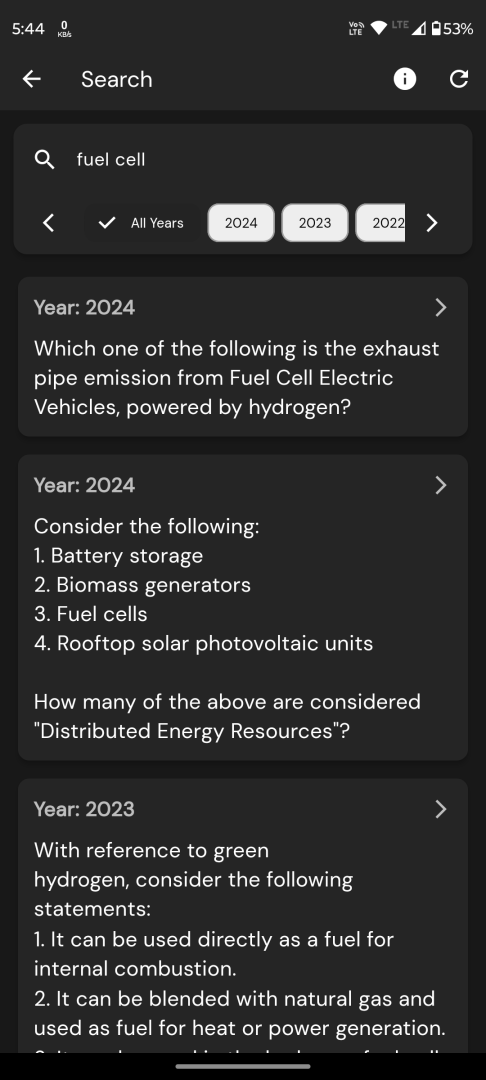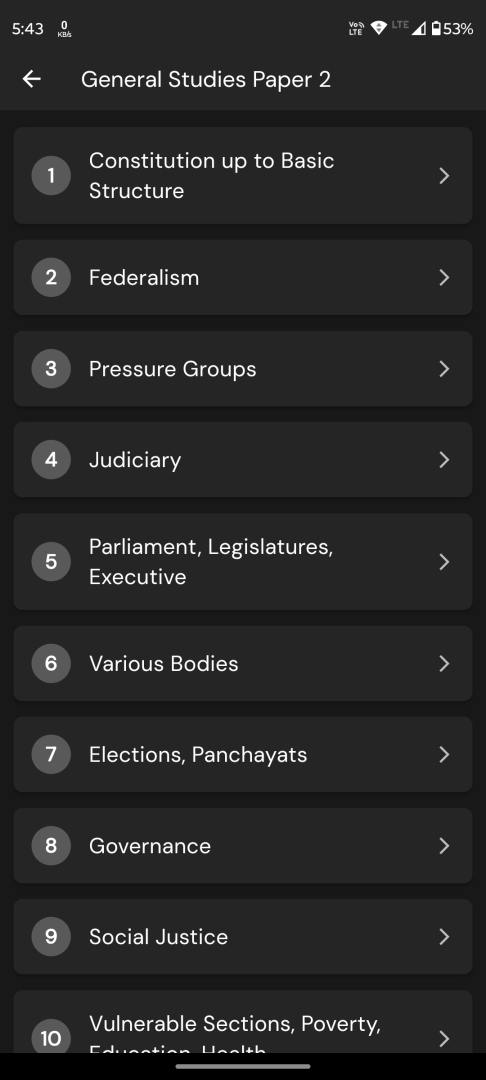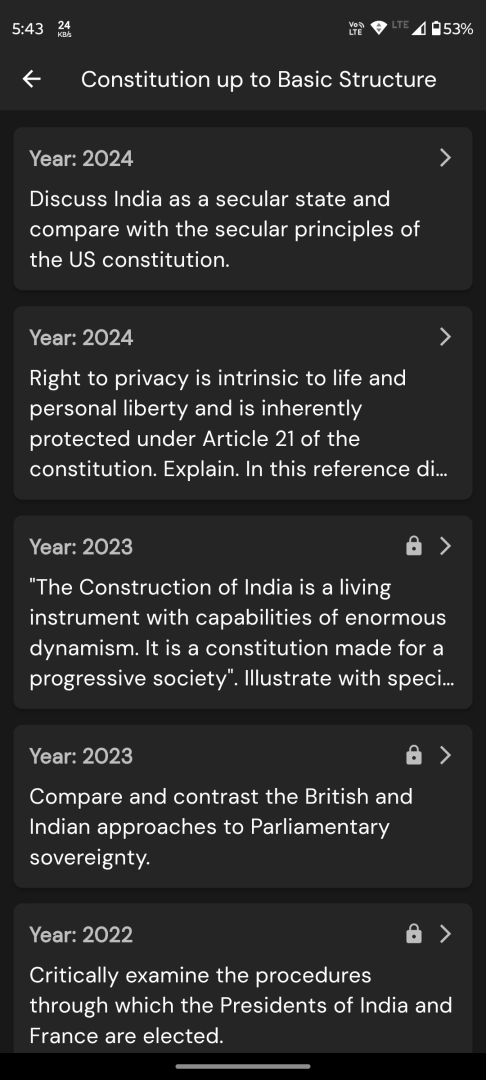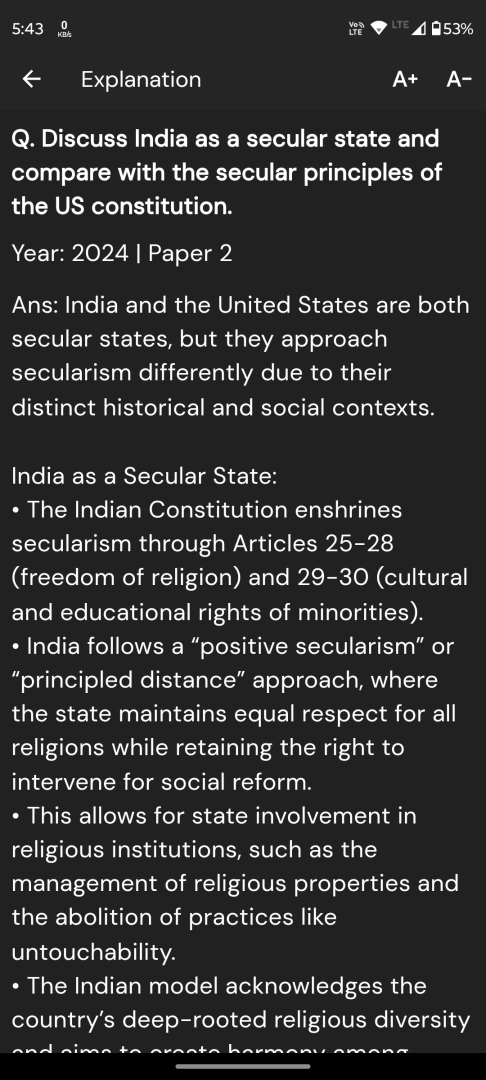Q. Consider the following statements :
Statement I: The amount of dust particles in the atmosphere is more in subtropical and temperate areas than in equatorial and polar regions.
Statement II : Subtropical and temperate areas have less dry winds.
Which one of the following is correct in respect of the above statements?
(a) Both Statement I and Statement II are correct and Statement II explains Statement I
(b) Both Statement I and Statement II are correct but Statement II does not explain Statement I
(c) Statement I is correct but Statement II is not correct
(d) Statement I is not correct but Statement II is correct
Correct Answer: (c) Statement I is correct but Statement II is not correct
UPSC Prelims 2025 GS Paper's Solution
Explanation :
Statement I: The amount of dust particles in the atmosphere is more in subtropical and temperate areas than in equatorial and polar regions.
Subtropical and Temperate Areas: Atmospheric or wind-borne fugitive dust, also known as aeolian dust, primarily originates from dry regions where high-speed winds can lift silt-sized material. A significant portion of the world’s deserts, which are major sources of dust, are located within the subtropics, where semi-permanent subtropical anticyclones reside. The Sahara Desert, the largest hot desert, is a major source of aeolian mineral dust, with its dust being transported across vast distances, including to the Caribbean and the Amazon basin. Human activities like grazing, ploughing, and vehicle use can also destabilize land and contribute to dust production in these areas. Temperate zones also include continental climates which can have more extreme temperatures and dry conditions in some areas.
Equatorial Regions: Tropical rainforest climates, or equatorial climates, are characterized by consistently high temperatures, plentiful precipitation, heavy cloud cover, and high humidity, with very little annual temperature variation. The constant low atmospheric pressure near the equator means winds are generally rare and weak, except for sea and land breezes in coastal areas. High rainfall in these regions tends to wash dust particles out of the atmosphere.
Polar Regions: Polar climates consist of cool summers and very cold winters, resulting in treeless tundras, glaciers, or permanent ice layers. While “diamond dust” (tiny ice crystals) is common in Antarctica and the Arctic, it’s a form of precipitation, not soil dust. The vast ice and snow cover limit exposed land for dust generation, and while some dust transport from other regions to the Arctic occurs, the primary sources of atmospheric dust are not typically located within the polar regions themselves.
Based on this, Statement I is correct.
Statement II: Subtropical and temperate areas have less dry winds.
Subtropical Areas: The Hadley cell, a global-scale atmospheric circulation pattern, involves air rising near the equator and descending in the subtropics at around 25-30 degrees latitude, creating high-pressure areas. This descending air is cool and dry, contributing to the formation of subtropical deserts. The surface flow of the Hadley cell, known as the trade winds, deviates westward, producing winds from the east. Mediterranean climates, a type of subtropical climate, are bounded by arid deserts on their equatorward sides that bring dry winds causing dry summers. In some humid subtropical regions, powerful anticyclonic and katabatic (downward-flowing) winds from Central Asia can lead to pronounced dry winters.
Temperate Areas: Temperate climates are influenced by various factors including prevailing wind direction. While some temperate regions experience humid conditions, others, particularly continental climates, can have more extreme temperatures and dry periods.
Therefore, Statement II, which claims that subtropical and temperate areas have less dry winds, is incorrect. These regions are, in fact, characterized by significant dry winds, especially in subtropical desert areas.
Conclusion: Statement I is correct, but Statement II is not correct. Therefore, Statement II cannot explain Statement I.





